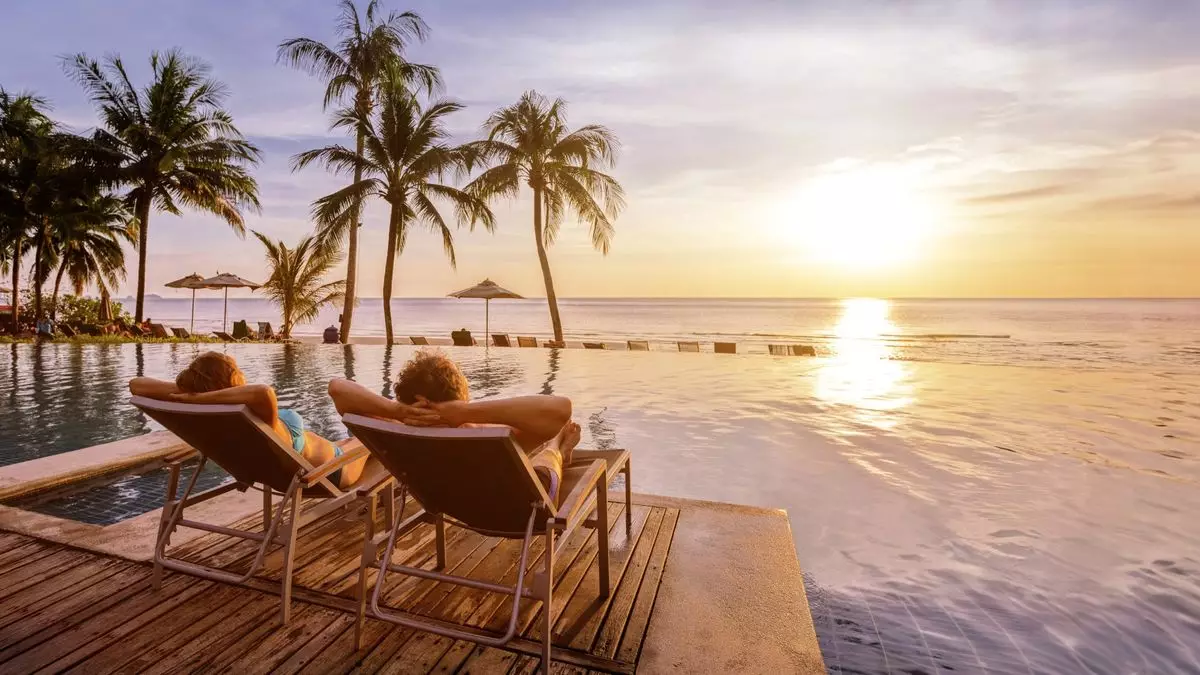The luxury travel industry has enjoyed a thorough renaissance in recent years, fueled by an energetic resurgence in demand post-pandemic. However, as experts like Clayton Reid suggest, the landscape may be precariously positioned for adjustment as we head into 2025. The interplay of market dynamics, changing consumer behaviors, and evolving economic conditions are likely to redefine what luxury means for travelers in the near future.
Despite the overall health of the luxury travel sector, evidenced by a revenue increase of 15% reported by SmartFlyer, there is a growing sentiment that the buoyancy of high-end hotel rates may not be sustainable. Reid’s assertions during the recent SmartFlyer Core conference underscore this tension, suggesting that high-end pricing may be forced downward. Analysts from CoStar reported only a modest increase of 1% in luxury hotel rates across the U.S. in 2024, reaching an average of $388 per night — a far cry from the 31% spike since 2019. This suggests an industry grappling with post-COVID pricing habits.
The surge in hotel rates, where more properties now charge upwards of $1,000 per night, could be a double-edged sword for the sector. While these premium prices have bolstered profits, they may also deter potential guests who find such rates untenable. Reid’s observation that upper-middle-class consumers are facing financial constraints—reflected extensively in rising credit card delinquency rates—points to a widening chasm between the demand for luxury travel and the consumers’ ability to pay for it.
One crucial aspect of the luxury market’s future is the evolving demographic of travelers. Ultra-high-net-worth individuals who can afford exclusive experiences—like the Sheldon Chalet in Denali National Park, with astronomical rates of $96,000 for a three-night stay—will likely remain insulated from economic pressures. However, travelers patronizing names like Four Seasons or Ritz-Carlton may reconsider their spending as financial realities hit home.
This dichotomy could alter consumer behaviors in the luxury sector. Reid argues that the demand for ultra-luxurious offerings may stabilize even as traditional luxury prices begin to shrink. Scarcity of unique experiences and exclusive amenities will always linger as a driving force behind high-end travel choices, but the average traveller may look for more value closer to home or opt for providers who offer unique experiences tailored to their budgets.
In this fluctuating environment, travel advisors play an increasingly crucial role. Consumers gravitate towards professionals who can navigate the complex landscape of luxury travel—finding value within a crowded market where prices are in flux. With luxury travelers now scrutinizing their spending more closely, advisors who can offer personalized insights or highlight value-added services are poised to thrive.
SmartFlyer’s COO, Erina Pindar, emphasized that the outlook for business remains robust, highlighting a community of advisors dedicated to providing exceptional experiences. However, savvy consumers with access to travel advisors will prioritize those who understand the nuances of both budget constraints and luxury indulgence.
As we consider the future of luxury travel, another critical element is the notion of “revenge travel,” a phenomenon witnessed during the post-pandemic rush to redeem lost travel opportunities. Travelers are reassessing the importance of travel in their lives—realizing that it offers profound personal enrichment. Pindar articulated this evolving perspective, suggesting that luxury travel may be less about doting on extravagant experiences and more about genuine self-discovery and growth.
This psychological shift could reverberate through the industry, as consumers desire not only an escape but meaningful connections and memories. Collaborating with travel advisors to curate personalized itineraries that reflect this new mindset may become a necessity for luxury providers seeking to sustain their client base amid fluctuating economic climates.
The landscape of luxury travel is undeniably shifting as we approach 2025. While the market currently enjoys overall growth, there are undercurrents that may indicate a need for recalibration in pricing and service delivery. Consumers are evolving, and luxury brands must adapt to meet their clientele’s new expectations and preferences. For those willing to innovate and provide exceptional service that speaks not only to opulence but also to value, the luxury travel sector remains ripe with opportunity. The paradigm is shifting, and only those willing to adjust will thrive in the intricate web of modern travel.

